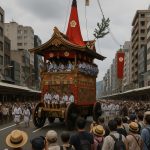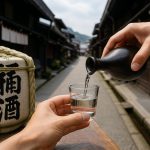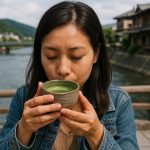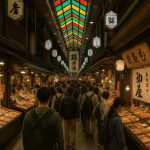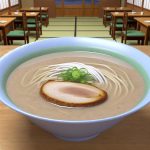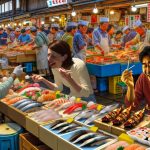The Gion Matsuri: A Glimpse into Kyoto’s Cultural Heritage
The Gion Matsuri is one of Japan’s most famous and historic festivals, held annually in Kyoto. This month-long event, taking place primarily in the month of July, is deeply rooted in the culture and history of Kyoto, offering a profound experience for both locals and visitors.
Origins and Historical Significance
Initiated in 869 AD, the festival originally started as a purification ritual aimed at appeasing the gods during an outbreak of plague. Over the centuries, the Gion Matsuri has evolved, showcasing the rich tapestry of Kyoto’s traditions. Named after the Gion district, which is renowned for its traditional wooden machiya houses and Geisha culture, the festival carries a historical significance that draws people from all over the world.
This grand event is more than a series of celebrations; it is a symbol of resilience and community spirit. Initially a ceremony held to protect people from epidemics, it now serves as an emblem of the city’s commitment to preserving its traditional practices while simultaneously embracing the modern era. Year after year, it highlights the adaptive nature of cultural expressions that resonate across generations.
Main Events and Attractions
The Gion Matsuri is characterized by its grand processions, known as the Yamaboko Junko, which occur on the 17th and 24th of July. During these processions, intricately decorated floats, called yamaboko, parade through Kyoto’s streets. These floats are a significant draw for tourists, each one representing Kyoto’s various districts and neighborhoods.
The construction and decoration of these floats involve local artisans practicing age-old crafts like weaving, dyeing, and painting, offering a deeper insight into Japan’s unique craftsmanship. It’s a time when the community comes together, sharing skills and passing down techniques and traditions that have stood the test of time. Participating in the preparation of the floats is a matter of local pride, with each float reflecting a different theme or story from Japanese lore.
Yamai and Hoko
The floats are divided into two categories: Yamai and Hoko. Yamai are smaller, more agile floats, while Hoko are larger and often towering structures, sometimes reaching up to 25 meters tall. Each float is a marvel of design, featuring tapestries, lanterns, and wood carvings. They require intricate planning and detailed craftsmanship, underscoring the importance of traditional arts and their place in modern festival culture.
Both Yamai and Hoko are remarkable spectacles, embodying innovation and tradition. Their designs not only capture the aesthetic values of the past but also narrate stories that have been part of Kyoto’s cultural fabric. As they float through the city, they connect the past with the present, offering a visual feast to the onlookers and a reminder of the timeless value of communal artistry.
Street Celebrations
In addition to the processions, street celebrations, known as yoiyama, take place. During these evenings, festival-goers can enjoy traditional food, drinks, and various cultural performances. The streets come alive with booths selling local delicacies such as okonomiyaki and yakitori, as well as traditional sweets.
The yoiyama nights serve as a prelude to the grand processions. As traditional music fills the air, visitors have the opportunity to engage with the rich cultural tapestry of the event. With stalls offering a range of local cuisines and crafts, it becomes a platform for cultural exchange. Travelers can immerse themselves in the vibrant atmosphere, experiencing firsthand the hospitality and warmth of the local people.
Participatory Elements
The Gion Matsuri isn’t merely a visual spectacle; it offers participatory elements as well. The Chinasha, or “pushing of the floats,” allows spectators to engage directly by helping to maneuver the massive floats through Kyoto’s streets, providing an authentic slice of festival life.
Such participative activities offer an invaluable chance to be part of a living tradition. By allowing visitors to engage in the physical act of float maneuvering, the festival bridges cultural gaps, creating shared memories and a sense of belonging. For those participating, it is an immersive step into a practice that has united communities for over a millennium.
How to Visit
Kyoto is accessible via Japan’s extensive rail network. The festival events are centered in the Gion district, which can be reached via public transportation from Kyoto Station. For detailed travel information and schedules, you can visit the Japan National Tourism Organization.
It’s recommended to experience the Gion Matsuri early in the month to avoid the peak crowds present during the main processions. Accommodations in Kyoto can fill up quickly, so planning your stay well in advance is advisable. Being well-prepared enhances the overall experience, allowing visitors to savor the festival’s offerings without the stress of finding accommodations amidst the bustling influx of attendees.
Cultural Etiquette
When attending the Gion Matsuri, be mindful of cultural etiquette, such as respecting personal space and being patient with crowded conditions. Photography is generally permitted, but it’s courteous to ask for permission when taking close-ups of people, particularly those in traditional attire.
Engaging respectfully within this cultural setting is paramount. Awareness and appreciation for the customs during the festival can enrich the visitor experience, ensuring that it is respectful and rewarding. By observing these norms, visitors contribute to the preservation of the festival’s integrity, fostering a positive exchange between guests and hosts.
By immersing yourself in the Gion Matsuri, you’ll not only witness a cultural phenomenon but also gain deeper insights into the traditions that continue to shape Kyoto’s identity. The festival is a testament to the enduring spirit and cultural richness of Kyoto, blending history, art, and community into a harmonious celebration that captivates all who experience it.

